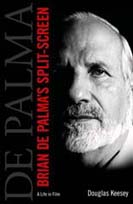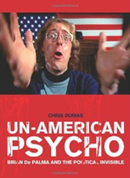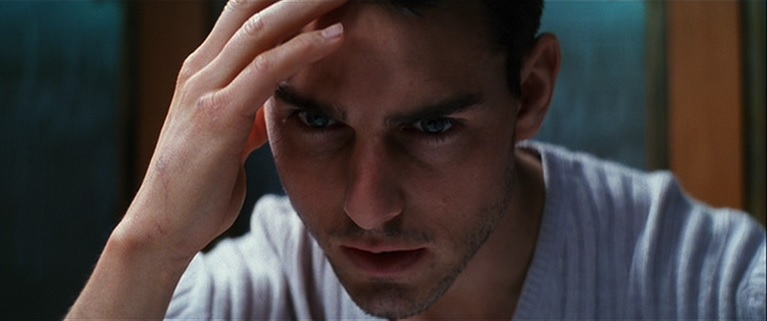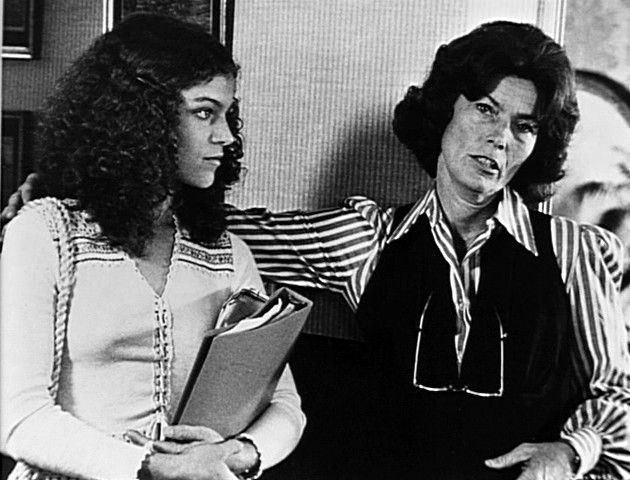AMONG contemporary-urban-scene-movies (sub-genre, invasion-of-privacy) Brian De Palma's "Hi, Mom!" stands out for its wit, its ironic good humor, its multilevel sophistications, its technical ingenuity, its nervousness, and its very special ability to bring the sensibility of the suburbs to the sins of the inner city. With no recognizable landmark further north than Cooper Square, it nevertheless feels like Bronxville or the quieter stretches of the upper East Side. Not that it aspires to quietness or that it even for a second eschews relevancy. One major portion (for me, the best portion) depicts an all-black play production, "Be Black, Baby," in which the cast, in white face, mingles with, steals from, and finally beats and rapes the white liberal audience. And the hero, a young Vietnam veteran, moves from filthy picture-taking to middle-class apartment house bombing, partly in an effort to achieve total involvement—which, in the terms of this film, seems necessarily to include a final solution.
But the eager hero (Robert De Niro) and the over-eager heroine (Jennifer Salt, the major interest of the flashbacks in "Midnight Cowboy," revealed as a fine comedienne here) are so clean-cut; the second leads, white and black, so epitomize attractive youth; and the supporting cast, as in many Brian De Palma movies, could so handsomely model a panoramic painting of the Rape of the Seven Sister Colleges; that an air of tasteful respectability pervades even the outrageous violence. As if they were making bombs on West 11th Street.
"Hi, Mom!" turns approximately every other current social misery to a comedy that is sometimes quite elabborately successful and sometimes only well intentioned. As in De Palma's previous "Greetings," the humor, at its best, is understated but highly structured—so that you have to work a bit for your laughs. But "Hi, Mom!" is much sharper, crueler, funnier. Although it scatters some shots (often in a kind of fast-motion photography that seems an addiction of De Palma's) it pulls enough together to suggest some major insights, as it investigates the militarization and despoliation of Washington Square South.
THE suspicion has been in the attic of my mind for some time, but it didn't start clomping around in such a way that I had to acknowledge its presence until the other day, when I came out of the Cinema I after seeing “Getting Straight.” “Well,” I found myself saying with a good deal of sincerity, “at least the riot is a lot better than the one in ‘The Strawberry Statement.’” My companion had objected to the neo‐Busby Berkeley choreography with which Richard Rush, the director of “Getting Straight,” had staged the attempted student revolution and police bust that conclude the film: Elliott Gould and Candice Bergen, their eyes locked in romantic recognition, rush into each other's arms across a room crowded with swinging nightsticks, and then repair to a nearby staircase to make love, accompanied by the sounds of rock music and cracking skulls. “Terrific!” said a young man sitting behind me.
This was the same young man who, at the very start of the movie, had whispered “terrific photography!” when Rush, like a dreary tour guide, directed our attention from one character to another by shifting the focus of his camera. (The young man had apparently been dazzled to the point of catatonia when Rush shot one scene upwards through the bottom of a typewriter, which is Academe's variation on what Billy Wilder once called “the Santa Claus shot”— the love scene photographed through the embers of a fire place.)
“Getting Straight” (youth, education, the relevance of universities) might be tolerable if it were the only movie of its kind. However, it's not. In fact, it almost looks like part of a conspiracy when one considers such other current films as “The Magic Garden of Stanley Sweetheart” (youth, education, sex, drugs), now at the Paris, and “The Landlord” (youth, sex, white guilt, black paranoia), now at the Coronet. I'm also thinking of “The Strawberry Statement” (youth, education, the relevance of universities, personal commitment), a Cannes entry that will open at Cinema II tomorrow.
Each of these big‐budget, Hollywood financed movies pretends to deal with important contemporary issues when it actually is co‐opting—and then sub merging—those issues in ways that must offend even those who stand somewhat to the right of Marcuse. Because their ultimate effect is to “soothe and prolong stupefaction,” one begins to think along the lines of the kid in “Woodstock” who blames the CIA for seeding the clouds that brought the rain to the pastures of Bethel.
In my more sane moments I realize that the conspiracy is, for the the being anyway, a completely honorable one: to make profits by plugging into the current scene in ways that will interest the biggest possible audience. What better, safer way to define legitimate social outrages and incipient revolution than in completely romantic terms, and in cinematic styles that, although they look comparatively new, are subliminal calls to reaction because of their identification with 20‐, 40‐ and 60‐second television commercials?
To paraphrase Jean‐Luc Godard, who once said that every tracking shot is a political statement, I'd say that every zoom shot is a call to preserve the status quo (and to win happiness‐ever after) by purchasing more cigarettes, shampoo and Dodge Darts. (I will subscribe to the idea that TV commercial techniques can enrich the theatrical feature film when someone makes a decent theatrical feature film 60 seconds long.)
Every movie, by being a movie, has a way of romanticizing all that it touches, but the makers of “Getting Straight,” “Stanley Sweetheart” and “The Landlord” have not hesitated to augment that romance in their own fashions. Stanley Sweetheart (Don Johnson), a Columbia junior, resolves his identity crisis (good heavens, isn't there another phrase for it?) by having a series of affairs that leave him exhausted, wiser (and the envy of every male in the audience). In “Getting Straight,” Elliott Gould, a Vietnam veteran and former drop‐out earnestly trying to get his master's degree in education, finally opts for mindless revolution because (1) he gets caught cheating, (2) the university authorities are comic strip buffoons, and (3) student demonstrations that turn into orgies of destruction of file cabinets are “sexy.”
“The Landlord” is, as the ads say, about a 29‐year‐old boy who runs away from home and buys a tenement in a Brooklyn ghetto. It is full of individually funny things (Beau Bridges, Lee Grant, odd lines of dialogue), but its heart is as fickle as that of a Broadway show. The blacks are alternately patronized and sentimentalized; the suburban whites are so monumentally gauche they don't even belong in the same movie with Bridges (they are playing in a series of blackout sketches while he seems to be in a genuine satire). For him salvation is a mixed marriage.
Of all these films, “The Strawberry Statement,” adapted by Israel Horovitz from James Kunen's novel about the 1968 Columbia confrontations, has the most interesting potential. However, when I saw the film at Cannes (I understand it's been somewhat re‐edited since), the pretty, conventional performances, and the flashy, zoomed ‐ out ‐ of ‐ its mind cinematic style denied the effect of its concerned melodrama.
Simon (Bruce Davison), an amiable kid as committed to crew as to causes, originally joins the protest to get near his girl. When, finally, he is overwhelmed, it seems he's overwhelmed less by historical events than by soundtrack music. The Kent State affair has given “The Strawberry Statement” an unhappy relevance that has nothing to do with its value as a movie.
It isn't that these films are as bad as they are opportunistic, unworthy. Ideas and characters are seldom protected from the gags, for ideas and characters are expendable and gags aren't. “Getting Straight” gets a lot of comic mileage out of Gould's ancient car that pops, wheezes and groans with all sorts of special effects that would have done credit to a Marx Brothers movie.
Every film that makes its villains out to be fools (without endowing its heroes with commensurate foolishness) automatically denies the urgency of the conflicts it presents.
It is just this sense of shared idiocy that makes Brian De Palma's “Hi, Mom!” so much more satisfying than the more pretentious “Getting Straight,” “The Landlord” and “Stanley Sweetheart.” “Hi, Mom,” now at neighborhood theaters, is not only funnier than these films, it is the first legitimately funny film I've seen in a very long time. It traces the progress of an urban pilgrim from neat, bland conformity to neat, bland anarchy. Jon Rubin (Robert De Niro), a failure as a dirty filmmaker, joins a militant black theater company putting on something called “Be Black, Baby.” Eventually he comes to identify himself so closely with the victims of bourgeois repression that, in the film's penultimate sequence, he is seen happily stuffing the washing machine, in the basement of his Washington Square Village apartment house, with dynamite. Up go his wife, his unborn child, his pipes, his easy chair and his identity as an insurance salesman. In the last sequence, Jon turns up at the scene of the disaster, masquerading as a Vietnam veteran, mouthing truisms about violence for the benefit of the TV camera and waving to his Mom out in television land.
I doubt that De Palma and Charles Hirsch, his producer and co‐author, set out seriously to trace the evolution of a Now anarchist. Ironically, however, John's extraordinary act makes a lot more sense than Gould's final rebellion in “Getting Straight.” Jon is, after all, simply carrying his white middle‐class guilt to a new plateau of experience and action. The movie works because it is consistent, because it is witty, because it is played beautifully and because it resolutely refuses to use most of the clichés of current filmmaking, except when it wants to call attention to clichés.
I'd also like to recommend Win Chamberlain's “Brand X,” at the Elgin. This is a tacky, vulgar, dirty, sometimes dull, often hilarious movie that pretends to be a series of television commercials, panel shows, dramas and news broadcasts, most of which star Taylor Mead, who, by simply breathing, is an affront to all vested interests. A lot of talented or notorious people (Sally Kirkland. Frank Cavestani, Abbie Hoffman, Sam Shepard) turn up in various sketches, but it is Mead's movie. I particularly liked a Presidential news conference in which Mead, as the President, is asked what he thinks of osmosis (“He's definitely not qualified for the Supreme Court”) and to describe his program for India (“shoot all the cows, drain the Ganges and turn the Taj Mahal into a Carvel ice cream stand”). Its humor, as you can see, is that of a liberated college humor magazine, but then, we haven't had much good (or bad) humor from any college magazines lately. They take themselves seriously—and well they might.



























